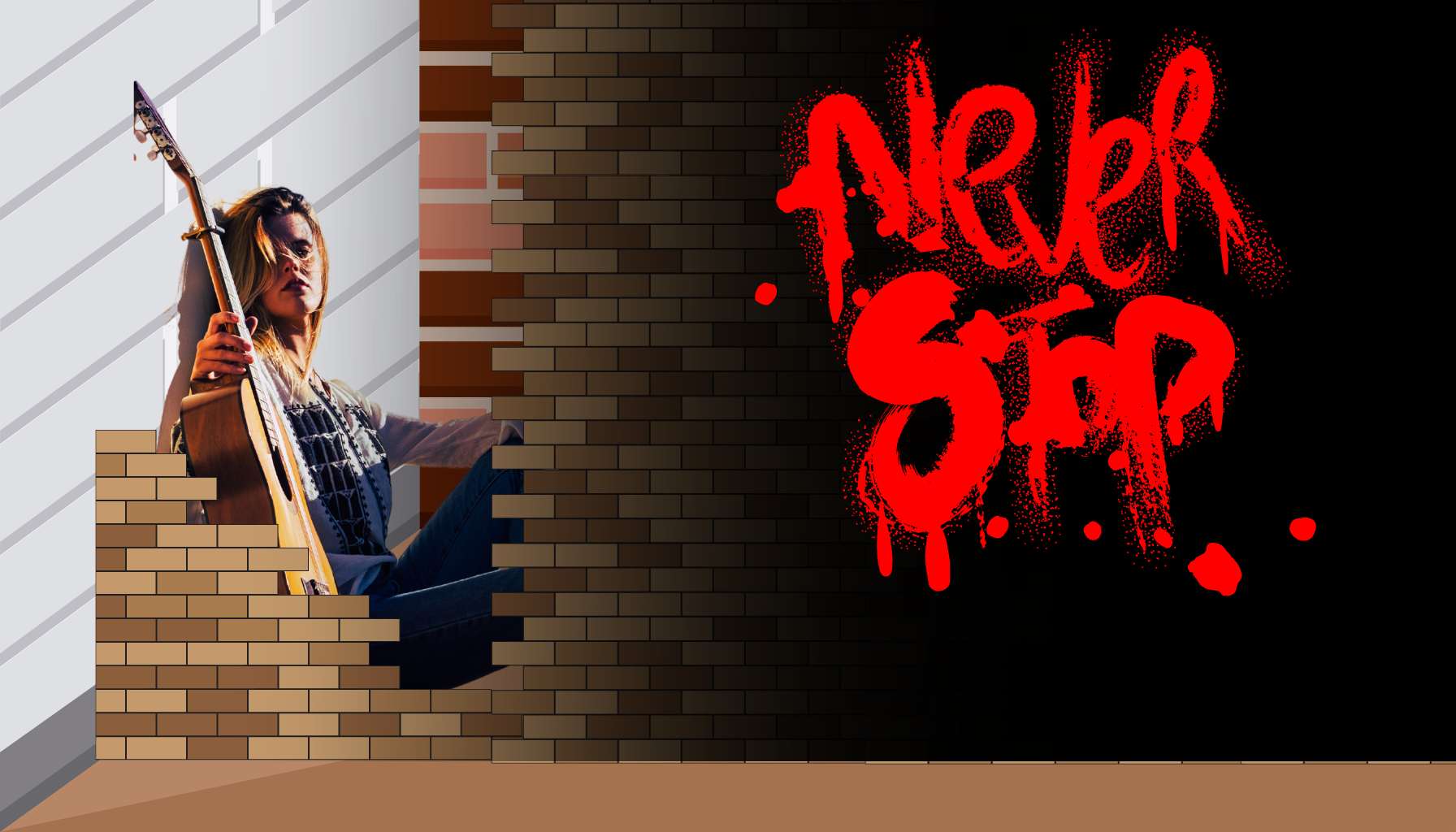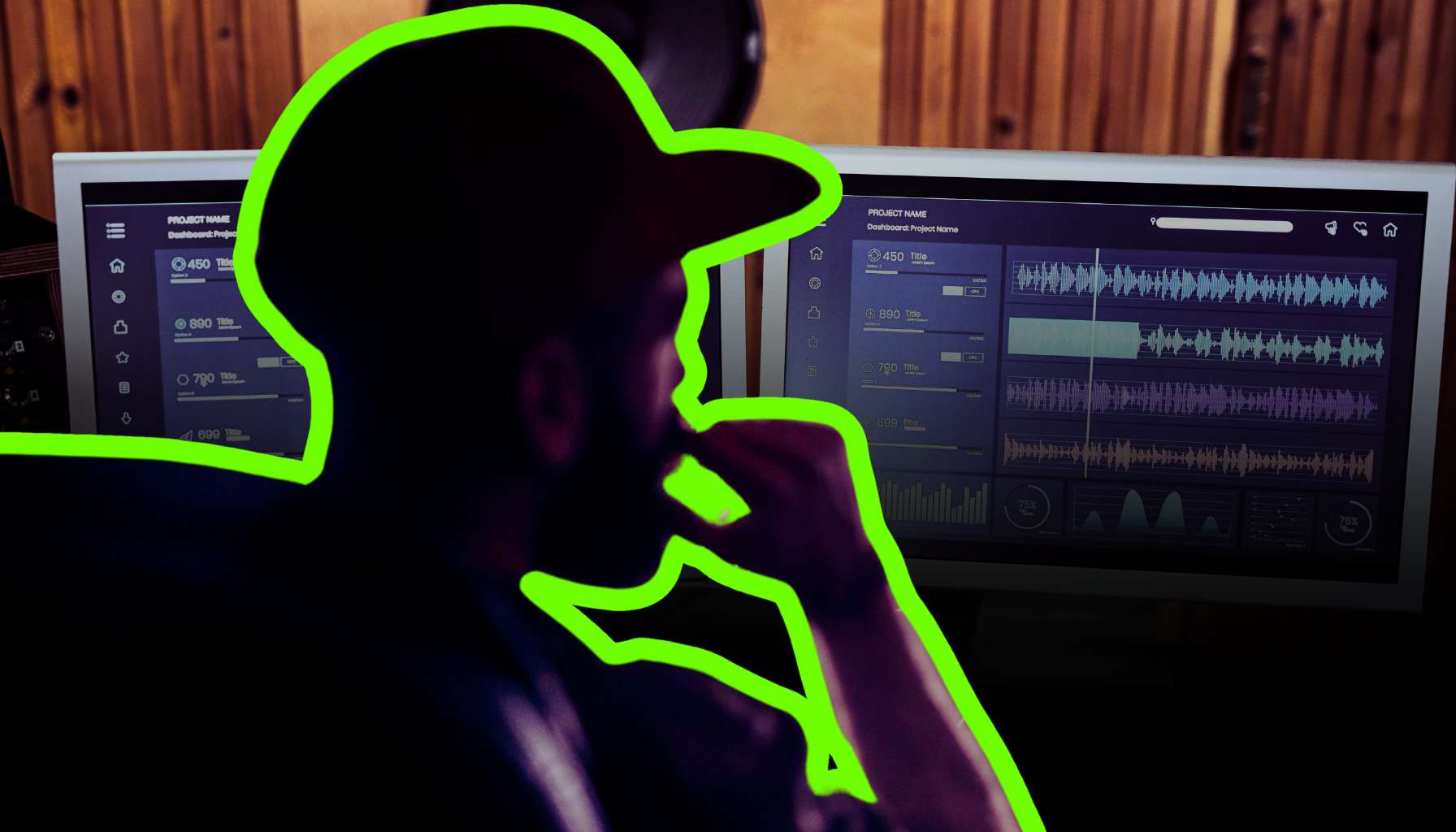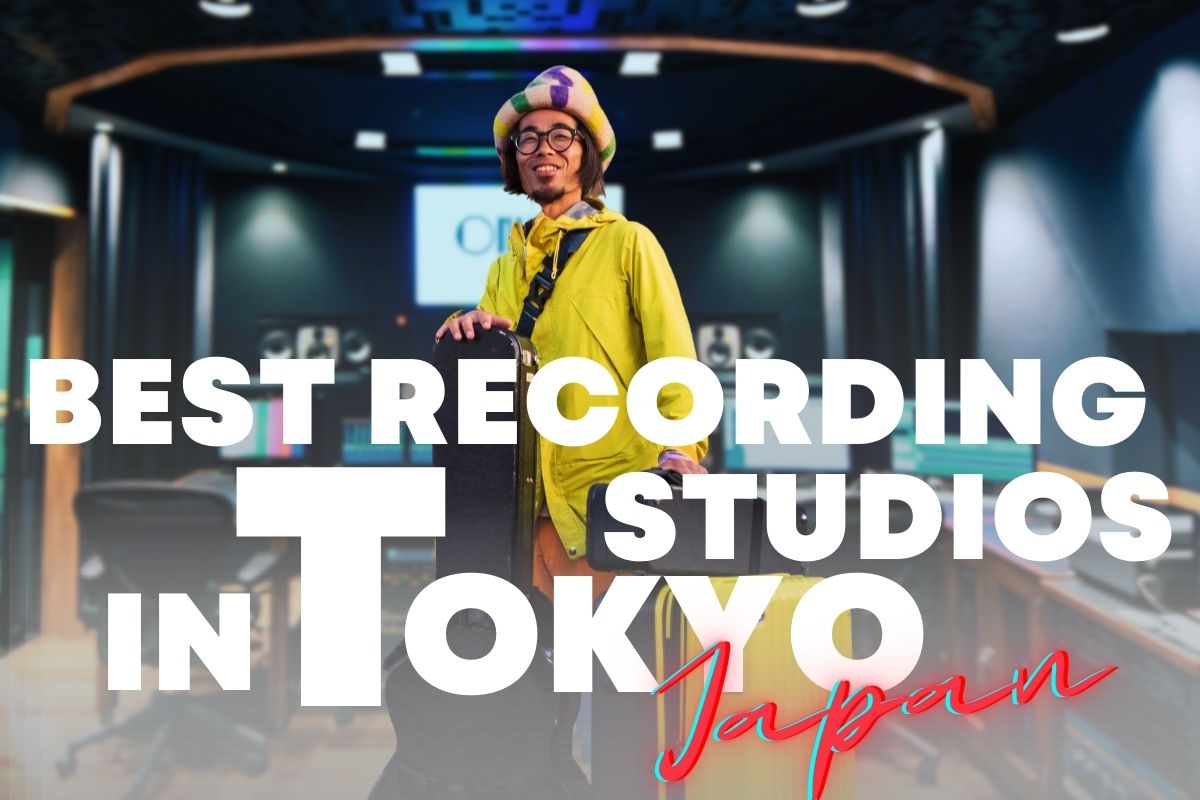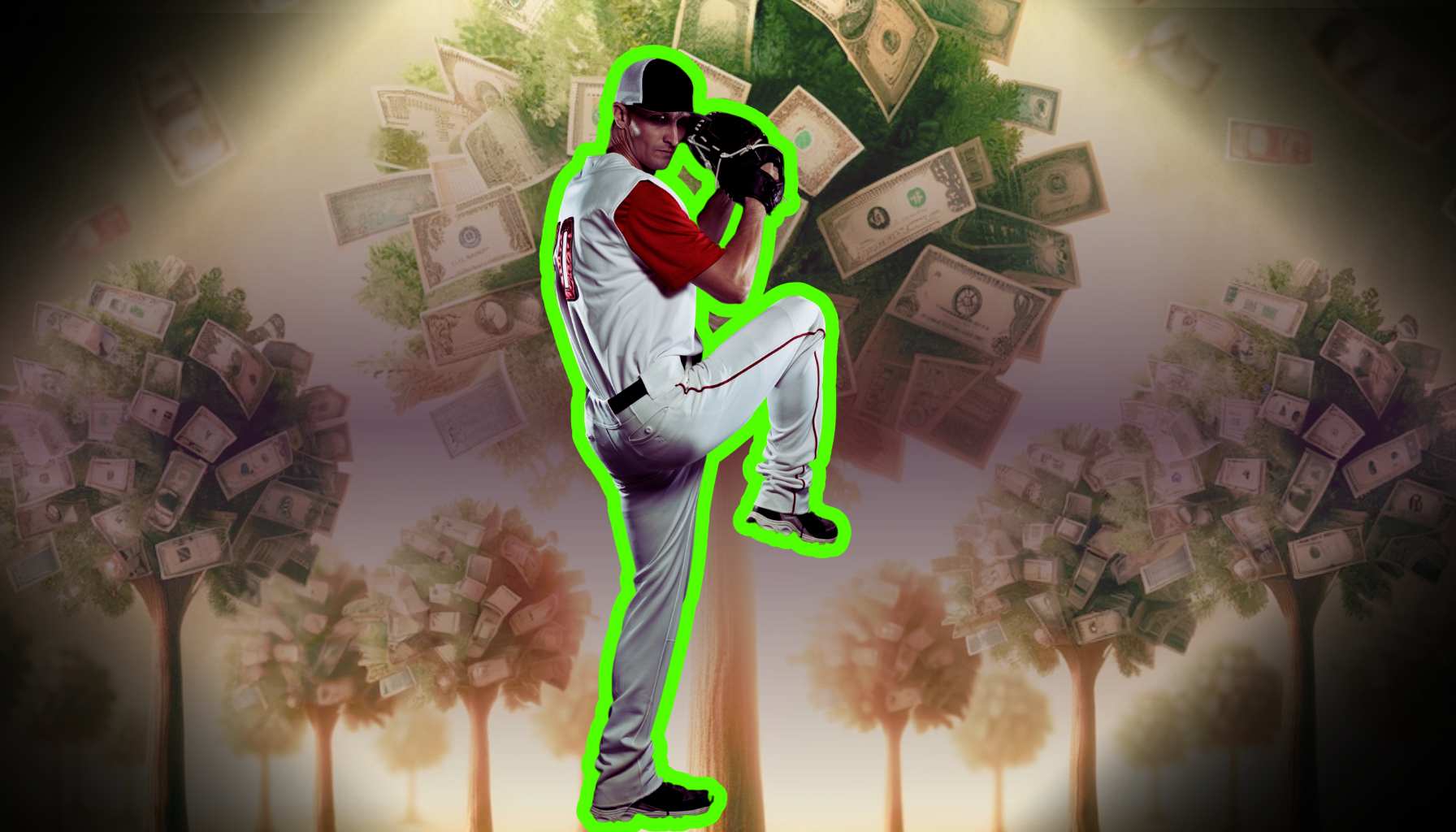Sh*tty Advertising in Music is REAL

Ever seen an ad that made you cringe so hard you wanted to quit music and become a hermit? Yeah, we’ve all been there. In the cutthroat arena of the music industry, a bad ad isn’t just a minor misstep; it’s a full-on faceplant. But fear not, intrepid artist—let’s dissect the musical misfires you’ll want to dodge faster than a crowd surfer with questionable hygiene.
Role in Artist Exposure
First off, advertising is your megaphone to the world. It’s the difference between serenading a brick wall and rocking out at Madison Square Garden. When done right, it catapults you from obscurity into the spotlight, transforming casual listeners into die-hard fans.
Impact on Fan Engagement
Engagement isn’t just a buzzword; it’s the lifeblood of your connection with fans. Effective ads don’t just grab attention; they start a conversation, inviting fans to be a part of your musical journey.
Common Advertising Mistakes Artists Make
Now, let’s talk blunders. The kind of mistakes that make your wallet weep and your reputation recoil. We’re talking ads that are about as effective as a guitar with no strings.
Misguided Strategies
Think all publicity is good publicity? Tell that to the ad that targeted metalheads with folk music. Know your audience, or you’ll be singing to an empty room.
Wasted Advertising Budget
Throwing money at the problem like it’s a flashy guitar solo doesn’t guarantee a standing ovation. Without strategy, your budget will vanish faster than a drummer at load-out.
Learning from Bad Examples
Smart artists learn from their mistakes; the smartest learn from others’. Let’s take a cringe-worthy tour through the hall of shame to ensure your ads are hits, not flops.
Educational Approach to Common Errors
It’s like music theory for marketing: dissecting the dissonant ads to understand why they hit a sour note. Education is your ticket to a chart-topping campaign.
How to Avoid Similar Pitfalls
By studying the ‘what not to do’ of music ads, you’ll navigate the marketing minefield with the grace of a ballet dancer in a mosh pit. Now that we’ve set the stage, let’s march into the next act: non-targeted, broad audience ads.
It’s about getting as specific as an indie band’s genre description and as targeted as a laser show at a rave. So tighten your straps and tune up, because we’re about to dive deep into the art of audience segmentation and why shooting your ad dollars into the crowd with a t-shirt cannon is a surefire way to miss the mark.
Understanding Audience Segmentation
Imagine blasting death metal to a crowd waiting for a symphony orchestra. That’s what you do when you run non-targeted ads. In the digital amphitheater of music marketing, knowing your audience isn’t just good practice; it’s the key to avoiding the cacophony of wasted effort and budget.
Defining Target Demographics
To avoid the scattergun approach, start by carving out your fan base into segments as defined as the genres in your music library. This means understanding who they are, what they like, and where they hang out online. Think of it as setting up a VIP section tailored just for them.
Importance of Niche Marketing
Niche marketing isn’t just a fancy term; it’s your secret weapon in cutting through the noise. By targeting the listeners who already tune into your wavelength, you’re not just throwing darts in the dark; you’re hitting bullseyes.
Examples of Poorly Targeted Ads

Ever seen an ad for a steakhouse at a vegan convention? That’s what happens when ads miss their mark. Let’s look at some examples where the message went out to everyone but spoke to no one, turning potential hits into definite misses.
Case Studies and Analysis
These musical misfires are the “what not to do” of advertising. From country tunes marketed to rap enthusiasts to classical ads popping up in punk rock playlists, these case studies are lessons in marketing mayhem.
Resulting Engagement Metrics
The aftermath? Engagement metrics that are as dismal as a rainy day at a beach party. Poorly targeted ads lead to low click-through rates, abysmal conversion, and fans who are more disconnected than an unplugged electric guitar.
Best Practices for Targeted Campaigns
It’s time to turn those marketing flops into chart-topping success. By zeroing in on your audience, your ads can become the opening act that warms up the crowd before your main show.
Tools for Audience Analysis
Modern marketing is like having a high-tech tuner for your ads. Tools like Google Analytics and Facebook Insights are your roadies, setting the stage so you can rock the house.
Crafting Messages that Resonate
Crafting a message that resonates is like writing a chorus that sticks—it’s what makes your ad an earworm in the minds of your audience. It’s all about creating that personal connection that turns listeners into fans and fans into superfans.
As we drop the curtain on targeting the right ears, it’s clear that a one-size-fits-all approach to ads is about as effective as a broken string on stage.
But hold your applause, because next up, we’re diving into the world of overly promotional, sales-driven ads.
You know the kind—ads that come on stronger than a guitar solo in a quiet coffee shop. We’ll explore why hard selling can be a hard pass for your audience and how to strike the right chord with ads that provide value and build genuine connections. Get ready to tune into the psychology behind audience resistance and learn how to balance promotion with the kind of value that deserves an encore.
The Turnoff of Hard Selling
Let’s cut to the chase—nobody likes to be sold to, especially when they’re just trying to enjoy some tunes. It’s like being at a concert and having someone shove merch in your face during your favorite song. Ads that are too sales-driven can feel like an unwanted encore; they overstay their welcome and miss the mark on adding value to the listener’s experience.
Psychology Behind Audience Resistance
Understanding why fans hit ‘skip’ on your ad is like understanding why a song flops—it’s all in the psychology. Hard selling triggers a mental ‘ad block’, making your message as welcome as a feedback screech in a quiet acoustic set.
The Balance Between Promotion and Value
Finding the sweet spot between promotion and value is like crafting the perfect setlist. It’s not just about showcasing your hits; it’s about creating a journey that feels rewarding. Your ads should encore that sentiment, not interrupt it.
Examples of Sales-Heavy Ad Content
We’ve all seen those ads that scream “Buy now!” louder than a frontman with a megaphone. But when you’re more focused on selling than connecting, your ad is likely to be tuned out faster than a banjo at a techno festival.
Copywriting Samples
Copy that’s as pushy as a stage diver can backfire, leaving your audience feeling crowded instead of amped. Let’s look at some lyrical flops that treated fans like ATMs instead of members of the band.
Visual and Audio Elements
An ad with the subtlety of a pyrotechnics display in a library is bound to get a reaction—just not the one you want. Ads with over-the-top visuals and audio can leave fans looking for the exit, not the merch booth.
Creating Value-Driven Ad Content
It’s time to flip the script and make ads that resonate on a deeper level, like a ballad that gets the lighters up. Value-driven content connects with the heart, not just the wallet.
Storytelling and Emotional Connection
Good ads tell a story, and great ads make the listener the hero. It’s about striking a chord that resonates with emotion, making your ad the song that fans can’t get out of their heads.
Educational and Entertaining Approaches
Ads that educate and entertain can turn passive listeners into active fans. They’re the VIP backstage pass to your brand, offering an experience that’s as memorable as a killer encore. As the last note of this section fades out, remember: fans don’t want to be sold to—they want to be moved.
Next up, we’re shining a spotlight on the importance of high-quality production in ad content. Just as a great album needs more than just raw talent to hit the charts, your ads need more than just a message—they need the polish that screams ‘pro’. We’ll explore how investing in quality can turn your ad from a demo tape to a platinum record, so stay tuned and get ready to take your ad content from garage band to stadium tour.
The Impact of Production Values
You wouldn’t record a killer track with a tin can and string, so why would you release an ad that sounds like it was shot on a flip phone?
Just as high-fidelity sound can elevate a song, top-notch production values can make or break your ad’s effectiveness. It’s the visual and auditory polish that tells your audience, “We’re serious about our music, and our brand.”
Perception of Professionalism
First impressions are everything, and in the music biz, looking and sounding the part is non-negotiable. A slick, well-produced ad not only catches the eye but also holds attention, building credibility faster than a guitar riff at a rock show.
Audience Retention and Conversion
High-quality production isn’t just about flash; it’s about keeping your audience tuned in. With crisp visuals and clear sound, your ad has a better chance of not just being seen and heard, but also remembered—and that’s where the magic of conversion begins.
Notable Examples of Poor Production
We’ve all cringed at ads that look like they were cobbled together during a power outage. Grainy visuals, muffled audio, and choppy editing are the equivalent of a band playing out of tune—it’s not going to win you any fans.
Visuals
An ad with visuals that are blurrier than the legal details on a concert ticket is going to get overlooked. It’s not just about being seen; it’s about being seen in the best light.
Audio Quality
Audio that crackles more than a vinyl record isn’t retro; it’s just bad quality. In the age of HD and 4K, your ad’s sound needs to be as clear as the high note in your hit single.
Editing
Choppy editing can make your ad feel like a bad DJ set, where the beats never quite sync up. Smooth transitions and a cohesive flow keep the audience engaged from start to finish.
Investing in High-Quality Production
Skimping on production is like skipping rehearsals before a big gig—it shows, and not in a good way. Investing in quality production is investing in your brand’s image and, ultimately, its success.
Budgeting for Production Costs
Allocating funds for production might feel like a luxury, but it’s as essential as that killer chorus. A budget that accounts for quality production is a budget that’s music to your audience’s ears.
Hiring Professional Help
Sometimes, you need to bring in the big guns. Hiring professionals can transform your ad from garage band quality to main stage material. They’re the session musicians of the marketing world, and they know how to make your brand shine.
As we wrap up this section, keep in mind that the quality of your ad content is a direct reflection of your brand. Up next, we’re going to navigate the diverse landscape of digital platforms.
Because even the most polished ad can fall flat if it doesn’t vibe with the platform it’s played on. It’s like trying to fit a vinyl record into a CD player—it’s not going to work. We’ll dive into the nuances of different platforms, the importance of adapting your content, and why understanding these subtleties is crucial for hitting the right note with your audience.
The Nuances of Different Platforms
Just like you wouldn’t play a heavy metal solo at a folk festival, you shouldn’t serve the same ad across all platforms. Each social media stage has its own vibe, rules, and audience expectations. Ignoring these can lead to a marketing performance that’s more cringe-worthy than a pop singer trying to rap.
Format and Content Guidelines
Every platform has its own set of backstage passes—format and content guidelines that you need to adhere to. From the square stages of Instagram to the wide arenas of YouTube, knowing the specs is like tuning your instrument before a gig.
User Behavior and Expectations
Understanding the crowd is key. TikTok users might love a 15-second clip of behind-the-scenes action, while LinkedIn professionals might appreciate a longer, more polished performance. Read the room, or in this case, the platform.
Ads That Failed Due to Format Ignorance
We’ve all witnessed ads that stuck out like a sore thumb—or worse, got lost in the shuffle. These are the infamous cross-platform blunders where content that killed it on one platform died a sad, unnoticed death on another.
Cross-platform Blunders
An ad that’s a hit on Facebook might get booed off stage on Twitter if it doesn’t respect the platform’s character limit or culture. It’s like playing an acoustic set with an electric guitar—out of place and out of touch.
Audience Reception
When an ad misfires due to format ignorance, the audience’s reaction can range from indifference to annoyance. It’s the digital equivalent of a tomato being thrown at a stage—it’s messy, and it means you missed the mark.
Tailoring Content to Each Platform
Crafting platform-specific ads is like creating a setlist for each city on your tour. It takes a little more effort, but the cheers from the crowd make it all worthwhile.
Best Practices for Major Platforms
Each platform has its headliners—content types that perform best. Whether it’s a live session on Instagram, a tutorial on YouTube, or a quick joke on Twitter, playing to the strengths of each platform can help your ad take center stage.
Adapting Creative Assets Appropriately
Adapting your assets is like changing your strings for each show; it’s essential maintenance. Tailoring your visuals and messaging for each platform ensures your ad resonates with the audience, no matter where they’re tuning in from. As we segue from platform-specific strategies, let’s not forget the importance of staying true to your message.
Up next, we’ll explore the consequences of misleading or false advertising claims.
It’s the equivalent of lip-syncing on live TV—once you’re caught, it’s hard to win back that trust. We’ll discuss how to keep your ads honest and your reputation solid, ensuring your brand hits all the right notes with authenticity and integrity.
The Legality and Ethics of Advertising
Imagine a world where every ad promised you a private jet if you listened to a song. Sounds ridiculous, right? That’s because exaggerating or making false claims in advertising can land you in hotter water than a stage pyro mishap. In the music industry, where trust is your currency, playing fast and loose with the truth can bankrupt your reputation.
Truth in Advertising Standards
There are rules to this game, and they’re not just there to kill the buzz. Truth in advertising laws exist to keep the playing field level and the fans from being misled. Break these rules, and you might find yourself facing more than a tough crowd—think fines, legal action, and a brand scarred with a bad rep.
Long-term Reputational Risks
Short-term gains from embellished ads are like one-hit wonders—they don’t stick around. Misleading your audience might get you a quick surge in clicks, but when the track doesn’t live up to the hype, fans will remember. And not fondly.
Examples of Deceptive Ad Claims
There’s a hall of shame for ads that promised the moon but delivered a glow-in-the-dark sticker. Overpromising results or experiences can leave fans feeling cheated and, let’s face it, no one likes to be the butt of a bait-and-switch.
Overpromising Results or Experiences
Ads that claim a single song will change your life more than a lottery win are setting the stage for disappointment. Keep it real, and your fans will stick around for the encore.
Unrealistic Portrayals of Artist Success
We’ve all seen those “before and after” ads, where an artist goes from zero to hero overnight. While they make for a good Cinderella story, they rarely paint the full picture of hard work and hustle that’s behind any success.
Building Trust through Honest Advertising
The best artists don’t just play music; they play it straight with their fans. Transparency in advertising builds trust, and trust is what turns casual listeners into lifelong fans.
Transparency with the Audience
Being upfront about what your music can offer is like giving your fans VIP access to the truth. They’ll appreciate the honesty and reward you with loyalty.
Ethical Marketing Strategies
Ethical marketing is the platinum record of advertising. It shows you value your audience and are committed to a long-term relationship, not just a one-night stand. As we tune down from the serious talk of ethics and legality, let’s not lose the rhythm.
The next section will hit the beat on the importance of a strong call-to-action (CTA) in your ads. Without a compelling CTA, your ad is like a drum solo that never cues the band back in—leaving your audience hanging and your campaign lacking direction. So, stick around as we lay down the groove for CTAs that don’t just tap the hi-hat, but make the whole drum kit sing.
The Role of a Strong Call-to-Action (CTA)
Imagine rocking out to an epic guitar solo that ends with… nothing. No final chord, no cymbal crash—just awkward silence. That’s what an ad without a strong call-to-action (CTA) feels like. It leaves fans hanging when they should be clicking, buying, or screaming for an encore.
A CTA isn’t just a button or a line of text; it’s the encore chant that turns a listener into a fan, a fan into a concert-goer, or a concert-goer into a merchandise collector.
Guiding User Behavior
A strong CTA is like a stage director for your audience—it tells them where to go and what to do next. Without it, potential fans might scroll past without a second glance, much like a passerby ignoring a street performer.
Conversion Rate Optimization
Optimizing your CTA is like fine-tuning your instrument. It’s the difference between a sound that falls flat and a note that resonates with everyone in the room. A compelling CTA can boost your ad’s performance, just like a killer chorus can turn a good song into a hit.
Ads with Ineffective or Missing CTAs
Ever seen an ad that’s all build-up with no payoff? It’s like a drum roll that never ends. Ineffective or missing CTAs are missed opportunities where potential fans might’ve taken the next step—if only they knew what that step was.
Analysis of Weak CTAs
Weak CTAs are often too vague or lack urgency. They’re the musical equivalent of mumbling your lyrics. You might know what you’re saying, but your audience hasn’t got a clue.
Consequences on Campaign Performance
The fallout from a weak CTA can be a ghost town, where clicks are tumbleweeds and sales are distant mirages. Your ad might have had everything—except the one thing it needed to convert interest into action.
Crafting Compelling CTAs
A compelling CTA is like the hook in your favorite song—it grabs you and doesn’t let go. Whether it’s ‘Download Now’, ‘Get Exclusive Access’, or ‘Join the Club’, your CTA should be clear, concise, and too tempting to resist.
Action-oriented Language
The language of your CTA should be as active as a bass line in a funk track. Use verbs that inspire action and create a sense of immediacy. After all, you want your fans to act now, not ‘maybe later’.
Placement and Design Considerations
CTA placement is like the placement of a mic on stage—it needs to be just right to catch every word. Design considerations, such as button color and size, can mean the difference between standing out and blending into the background.
In the next section, we’ll discuss the importance of timing and context in your advertising campaigns. It’s not just about what you say or how you say it, but when you say it. An ad for a Christmas album in July might be as out of place as a snow machine in a summer festival. Stay tuned as we explore how to sync your ads with the cultural and seasonal rhythms of your audience.
Timing and Relevance in Ad Campaigns
Launching an ad campaign without considering timing is like a drummer who’s lost the beat—it throws off the whole song. In the music business, timing isn’t just a section in a metronome manual; it’s the heartbeat of a successful campaign.
Whether you’re dropping a summer banger or a winter ballad, aligning your ads with cultural moments and seasonal moods can turn a whisper of interest into a roar of engagement.
Cultural and Seasonal Considerations
You wouldn’t wear a beanie to the beach, so why would you advertise your cozy winter tunes when everyone’s searching for their next summer hit? Tapping into the cultural and seasonal zeitgeist means your music ad resonates with the current state of play, much like a perfectly timed key change.
Launching Alongside Events or Releases
Synchronize your ads with events or album releases to amplify their impact. It’s like the difference between a solo act and a full-band performance—the latter just has more oomph.
Case Studies of Ill-Timed Ads
The annals of music marketing are filled with ads that missed the mark so badly, they became cautionary tales. An ad for a spooky Halloween playlist that pops up during the Christmas season is more jarring than a record scratch in a quiet auditorium.
Out-of-Context Examples
Context is key. An ad that feels out of place can alienate your audience faster than a punk band at a classical concert. It’s not just about what you say; it’s about when and where you say it.
Public Reception and Backlash
Ads that miss the mark on timing can face public backlash, turning what should’ve been applause into a chorus of boos. It’s the marketing equivalent of being booed off stage—painful and public.
Strategies for Timely and Relevant Ads
Crafting ads with an eye on the clock and the cultural compass can help you hit the high notes with your audience. It’s about striking while the iron is hot, catching the wave of anticipation, and riding it all the way to the charts.
Planning and Scheduling
Plan and schedule your ads like a tour manager plots a gig itinerary—meticulously and with an eye on the horizon. This foresight ensures your ads go live when your audience is most receptive.
Real-time Marketing Tactics
Real-time marketing is the improvisational solo of the advertising world. It requires quick thinking and a finger on the pulse of what’s hot. When done right, it can make your brand look as cool as a rockstar sliding across the stage on their knees.
Much like a band with a signature sound, a consistent brand message helps you stand out in a crowded industry. Stay tuned to learn how to keep your brand’s voice in tune across all your advertising efforts.
The Importance of Brand Consistency
If your ads were songs, would they be a harmonious album or a mixtape of mismatched tunes? Brand consistency is the rhythm section of your marketing band. It keeps everything tight and together. Inconsistent branding is like a band where the guitarist is playing metal, the drummer is jazzing it up, and the singer thinks it’s karaoke night. Confusing, right?
Consistency in your advertising ensures that when fans see your ad, they recognize your unique sound in a sea of noise.
Building Brand Recognition
Brand recognition is the earworm that keeps your music stuck in someone’s head. It’s built through repetition and familiarity. If your ads are consistently styled and messaged, they become as recognizable as the iconic riff to “Smoke on the Water” – instantly identifiable and memorable.
Fostering Trust and Loyalty
Consistency breeds trust. When fans see a consistent message, it’s like hearing a familiar voice in a crowd – comforting and reliable. That trust is the foundation of fan loyalty, turning one-time listeners into lifelong supporters.
Examples of Inconsistent Branding in Ads
Ever seen a chill, acoustic indie artist advertise with flashy, neon graphics fit for a rave? It’s jarring. Inconsistent branding can leave fans scratching their heads and new listeners unsure of what you’re all about. It’s like telling someone you’re a vegan restaurant and then serving them a steak.
Visual Identity Conflicts
Your visual identity is your album cover. It should reflect the music within. Ads that clash with your established image can confuse the message and dilute your brand’s impact.
Mixed Messaging Across Campaigns
Mixed messages across campaigns are like a band changing their name every other gig. If fans can’t follow who you are, they’ll struggle to stay engaged. Consistency is key to keeping the crowd cheering for more.
Achieving Brand Consistency
So how do you keep your branding in tune? Think of your brand as a setlist for a world tour – it needs to be carefully curated to showcase your best and leave the audience wanting more.
Developing a Style Guide
A style guide is your brand’s backstage pass. It ensures everyone on your team knows the vibe you’re going for, from the font on your ads to the color palette of your Instagram feed.
Coordinating Campaigns Across Teams
When your marketing, design, and content teams jam together, the result is a coherent brand experience that resonates with your audience. Coordinating efforts ensure that whether it’s an email blast or a billboard ad, your brand hits the same notes. Just like the final track on a great album, we’re nearing the end of our advertising setlist.
FAQs: Navigating the Do’s and Don’ts of Music Advertising
As we’ve jammed through the ins and outs of music advertising, it’s clear that the path to a chart-topping campaign is as intricate as a prog rock opus. But, like any good encore, it’s time to address those lingering questions that might be buzzing in your head like a catchy chorus on repeat. Here’s the lowdown on how to avoid the common faux pas and make your music marketing sing.
How can I tell if an ad might be ineffective before I run it?
To spot a dud before it flops on stage, give your ad the soundcheck treatment. Test it with a focus group that mirrors your target audience. If they’re tuning out faster than a crowd when the power cuts, you’ve got some tweaking to do. Monitor for clarity, engagement, and that all-important emotional resonance that makes fans stick around for the encore.
What are some common red flags in music ad content?
Red flags in ad content wave more frantically than fans at a festival. Watch out for vague CTAs, a lack of brand consistency, and targeting that’s as broad as a genre-spanning Spotify playlist. If your ad screams “generic” or feels disconnected from your artist’s image and sound, it’s time to go back to the drawing board.
How much should I focus on ad quality versus quantity?
Quality trumps quantity every time. One well-crafted, targeted ad can have more impact than a hundred scatter-shot attempts. It’s like crafting a hit single versus filling an album with filler—focus on making your ad a platinum record, not just another track to skip.
Can I fix a bad ad campaign after it’s started?
Absolutely, you can tune up a campaign mid-run like a guitar during a live set. Use real-time analytics to gauge performance and pivot where necessary. Change up your visuals, tweak your copy, or adjust your targeting. In the studio of ad campaigns, you’ve got the power to remix until you get it right.
Where can I find resources to improve my music advertising skills?
Resources are as plentiful as demo tapes at a record label. Look to online courses, marketing blogs, and industry publications to sharpen your skills. Don’t forget to network with other industry professionals—sometimes the best tips come from backstage chats with those who’ve already rocked the ad charts.
As the house lights come up and we wrap this show, remember that in the world of music advertising, there’s always a new gig on the horizon. Keep your branding tight, your timing right, and your messaging bright, and you’ll have fans queuing around the block for your next release.
Whether you’re an indie artist looking to break through or a seasoned pro aiming to stay on top, the right advertising moves can make all the difference.
















